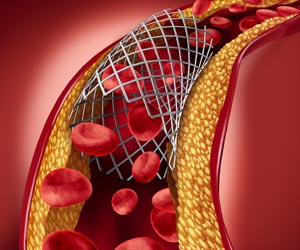Cochlear nerves are the spiral, fluid-filled structures present in the inner ear for transmitting the sound across sensory nerves to the brain.
The complications arising from cochlear implants are reported to be quite rare. However, studies have revealed incidences of problems like
Moreover, the visualization and detection of new bone formation within the body (in vivo) become challenging, despite its potential clinical implications.
“Such subtle changes are challenging to visualize in vivo, in particular in the vicinity of a metallic implant causing artifacts on computed tomography images. However, through the new availability of an ultra-high-resolution CT scanner, we were encouraged to investigate this,” says study co-lead author Floris Heutink, MD, MSc, from the department of otorhinolaryngology at Radboud University Medical Center (Radboudumc) in Nijmegen, the Netherlands.
Clinical Advancements
The study “Ultra-High-Resolution CT to Detect Intracochlear New Bone Formation after Cochlear Implantation” intended to detect the new bone formation in vivo by utilizing ultra-high spatial resolution CT (UHRCT) among 123 cochlear implant patients.
It was found that 83 (68%) patients (among the 123 patients) had new bone formation within 4 years of implantation, especially at the base of the cochlea. In addition, the new bone formation was also associated with long-term residual hearing loss in the group.
“As indicated by our study, there is a correlation between new bone formation and long-term residual hearing loss,”says study co-author Berit M. Verbist, MD, PhD, from the departments of radiology at Radboudumc and Leiden University Medical Center in Leiden, the Netherlands.
Negative Outcomes of New Bone Formation
There are several negative consequences to cochlear implant electrodes due to new bone formation:
- Affects the spread of electrical current within the cochlea
- This leads to complex device fitting and channel interaction
- Overall poor hearing outcome
- Complicates future gene therapies for cochlear function restoration
Need for Better Insights
As the study demonstrates several ill consequences of new bone formation, the evidence imparts an urgent need for diagnostic modalities to further improve the therapeutic consequences of cochlear implants.
“Last but not least, new bone formation may complicate reimplantation surgery. This technique will be a valuable tool to gain insight into occurrence, time course and the pathophysiology of this process and maybe used to evaluate still-to-be-developed treatments against new bone formation,” says Dr. Verbist.
Reference:
- Ultra-High-Resolution CT to Detect Intracochlear New Bone Formation after Cochlear Implantation
– (https://pubs.rsna.org/doi/10.1148/radiol.211400)
Source: Medindia



